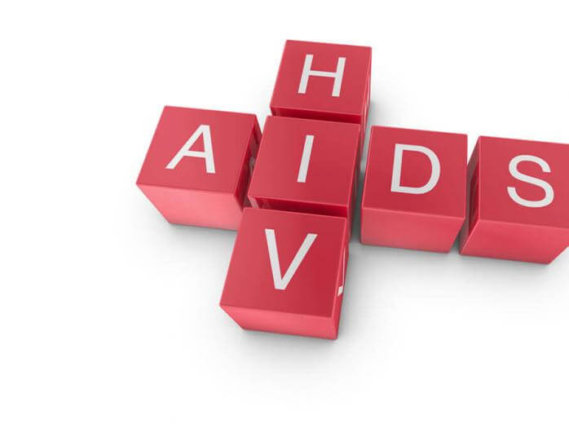A new study has revealed that more people died in 2019 from two of the deadliest pathogens, S. aureus and E. coli, than from HIV/AIDS (864,000 deaths) across the world.
The analysis conducted by the Global Burden of Disease & Antimicrobial Resistance Collaborators show that HIV research received $42 billion dollars, while E. coli research received $800 million.
According to the full study, which will be published in The Lancet on Monday, November 21, common bacterial infections were the second leading cause of death in 2019 and responsible for one in every eight deaths worldwide.
The analysis identifies bacterial infections as a global public health priority, ranking second only to ischaemic heart disease as the leading cause of death in 2019.
The latest finding raises concerns about the funding and research gaps on the two deadliest pathogens, but the authors argue that such funding gaps may have arisen due to a lack of data on the global burden of these infections until now.
The new study provides the first global estimates of mortality associated with 33 common bacterial pathogens and 11 major infection types that lead to sepsis death.
Estimates were generated for all ages and genders in 204 countries and territories that have country-level data available.
The authors used 343 million individual records and pathogen isolates from the Global Burden of Disease 2019 and Global Research on Antimicrobial Resistance (GRAM) studies to estimate deaths associated with each pathogen and the type of infection responsible. 7.7 million of the estimated 13.7 million infection-related deaths in 2019 were linked to the 33 bacterial pathogens studied.
In 2019, deaths caused by these bacteria accounted for 13.6% of all global deaths and more than half of all sepsis-related deaths. Lower respiratory infections (LRI), bloodstream infections (BSI), and peritoneal and intra-abdominal infections accounted for more than 75% of the 7.7 million bacterial deaths (IAA).
E. coli (950 000 deaths), S. pneumoniae (829,000), K. pneumonia (790,000), and Pseudomonas aeruginosa (559,000) were the other pathogens linked to more than 500,000 deaths. The leading bacterial pathogens were linked to a similar number of female and male deaths.
The most lethal pathogens and age-standardised mortality rates varied by location. With 230 deaths per 100,000 people, Sub-Saharan Africa had the highest mortality rate. The high-income super-region, which includes Western Europe, North America, and Australasia, had the lowest mortality rate, with 52 deaths per 100,000 people.
In 135 countries, S. aureus was the leading bacterial cause of death, followed by E. coli (37), S. pneumoniae (24), and K. pneumoniae and Acinetobacter baumannii (4 countries each).
Pathogens linked to the most deaths varied by age. S. aureus was linked to the most deaths in adults over the age of 15 years, accounting for 940,000 deaths. Salmonella enterica serovar Typhi was responsible for 49,000 deaths in children aged 5 to 14 years. S. pneumoniae was the most lethal pathogen in children older than newborns but under the age of five, accounting for 225,000 deaths. K. pneumoniae was the pathogen responsible for the most neonatal deaths, accounting for 124,000 deaths.
The authors admit that their study has some limitations, many of which are due to a lack of data for some parts of the world, particularly many low- and middle-income countries (LMICs), where the estimated disease burden is highest.
According to Authia Gray, study co-author and PostBachelor Fellow at IHME at the University of Washington's School of Medicine, country-level estimates for parts of the world where people are most affected by bacterial infections have been noticeably absent until now.
“These new data could act as a guide to help address the disproportionately high burden of bacterial infections in low- and middle-income countries and may ultimately help save lives and prevent people losing years of their lives to illness,” he said.
According to the study, building stronger health systems with increased diagnostic laboratory capacity, implementing control measures, and optimising antibiotic use are all critical to reducing the disease burden caused by common bacterial infections.
Latest Stories
-
Review Supreme Court’s jurisdiction before capping judge appointments – Justice Amaleboba
2 minutes -
Kumasi to undergo major clean-up ahead of Eswatini King’s royal visit
6 minutes -
Marital property law is gender-neutral and equitable – Justice Amaleboba
17 minutes -
Dr Bawumia is best positioned to lead NPP into 2028 – Egyapa Mercer
23 minutes -
CWC 2025: Can Xabi Alonso lead Real Madrid to victory?
26 minutes -
Mahama calls on MMDCEs to restore public trust through stakeholder collaboration
28 minutes -
Ghanaian destinies hang in the balance as US considers travel clampdown
30 minutes -
Mahama signals end of appointed MMDCEs, backs popular demand for elections
32 minutes -
Mahama cautions MMDCEs against misuse of Common Fund, vows no protection for offenders
39 minutes -
Socio-economic barriers responsible for fertility crisis, not desire – UNFPA global report
42 minutes -
West African agricultural stakeholders affirm commitment to prioritising soil health
42 minutes -
Assets declaration: Mahama’s sanction against flouting Ministers isn’t power usurpation – Justice Amaleboba
43 minutes -
NPP sets up 9-member committee for National Delegates Conference
49 minutes -
PA Conference 2025 launched to champion cross-border growth for executive assistants
55 minutes -
Ghanaian Hajj pilgrims who died had underlying health conditions – Hajj Task Force explains
58 minutes

